

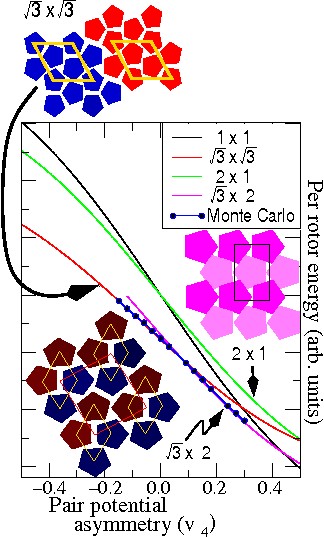
| Ground state analysis of a Hamiltonian that reflects the interaction between soft pentagonal rotors. While hard pentagons pack to give a 2x1 repeat (green curve), soft pentagons can order into at least three distinct additional structures. One of these, a 31/2 x 31/2 repeat (red curve), resembles the ordering experimentally observed in poly(2-ethylhexylfluorene). The blue curve is obtained in Monte Carlo simulations. | 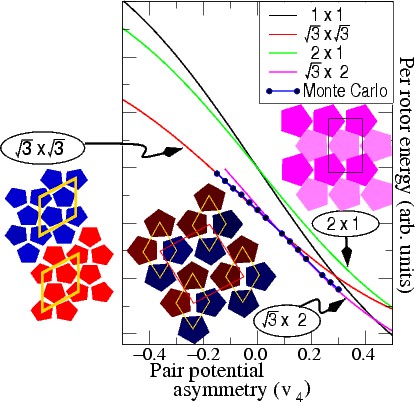 |
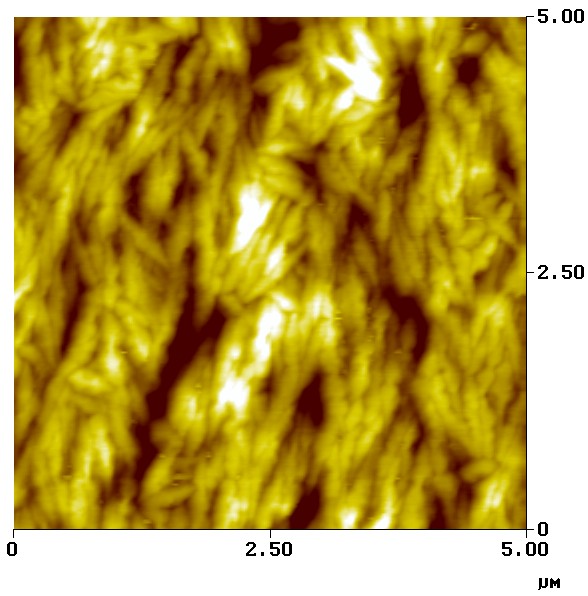
| Atomic force microscope image of a poly(2-ethylhexylfluorene) thin film formed atop a rubbed polyimide substrate (rubbing direction is in the vertical). There is a fibrilar structure oriented along the rubbing direction. |  |
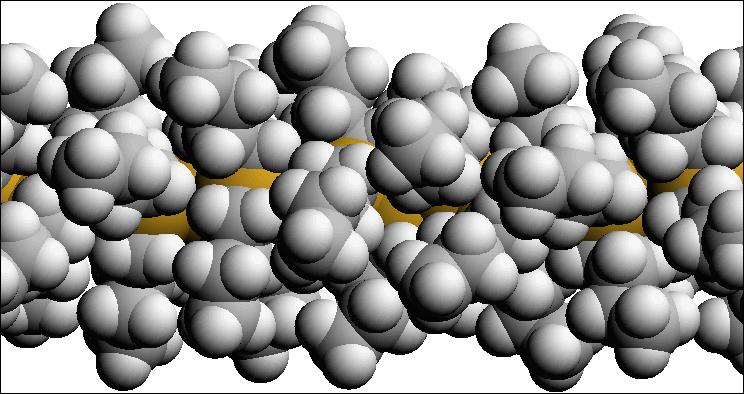

This image represents a proposed 14/6 helix of the silicon backboned polymer, poly(di-n-butylsilane). The model consists of repeating dyad "deviant/transoid" conformational isomers. Unlike saturated hydrocarbons, in which only gauche and anti) conformations are present, polysilanes are characterized by up to five low energy conformations. The carbon, hydrogen and silicon atoms are denoted by grey, white and gold shaded spheres respectively.
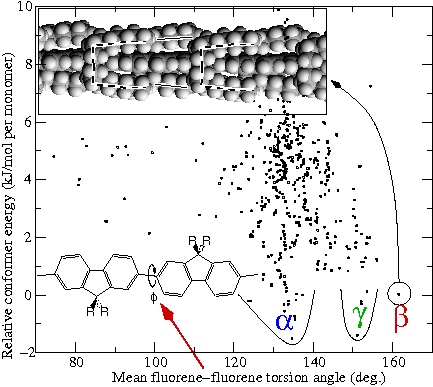

Mapping of low energy conformational isomers in the poly(di-n-octylpolyfluorene) polymer. (Per monomer energy is referenced to that of the so-called beta isomer). Each symbol corresponds to a single, unique tested conformer. Alpha (blue), beta (green) and gamma (red) correspond to the proposed conformer families. Inset: Model of the beta type isomer highlighting side~chains self-assembly.
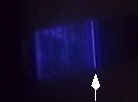
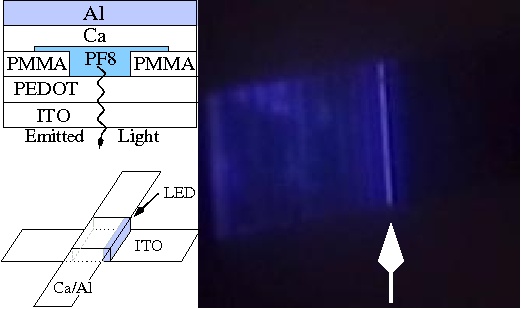
Blue emission from a polyfluorene light emitting diode (0.05 X 1.00 mm2) fabricated with a microfluidics applicator. The two insets depict the physical structure and layout of the device.
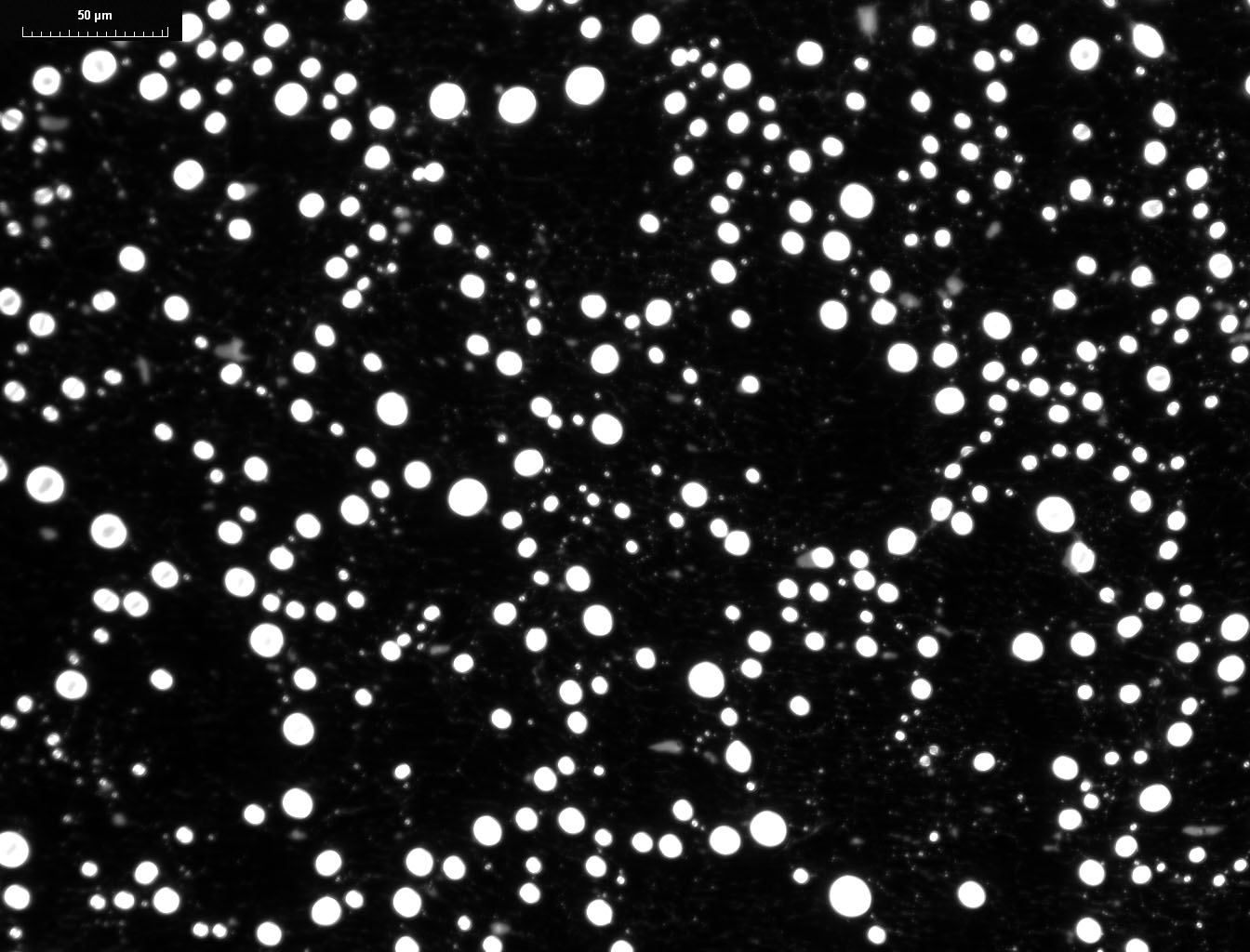

Fluorescence microscopy image from polyfluorene microspheres produced by dewetting on a liquid crystal substrate.


Polarized optical micrograph of Schlieren texture from polyfluorene drop and stripe formed by a microfluidics applicator.
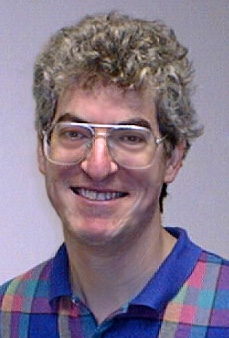

 E-mail
(mwinokur @ facstaff.wisc.edu)
E-mail
(mwinokur @ facstaff.wisc.edu)